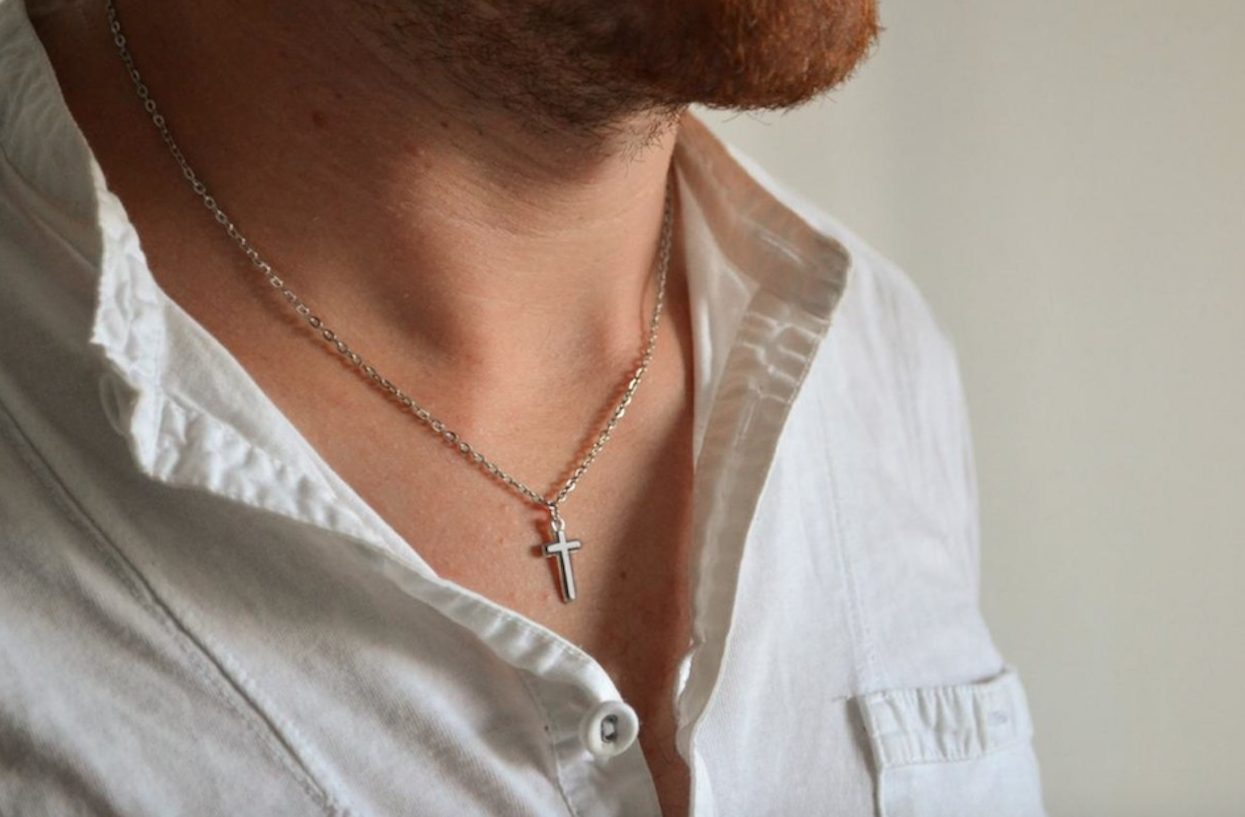
Religion, in one way or another, affects the life of every one of us. Some people daily perform the sacraments associated with their faith, others pay tribute to traditions but live a secular life. More often than not, people consider themselves believers, and the most common visual way to manifest their beliefs is to wear jewelry featuring religious symbols.
Christians normally wear crosses, Muslims – a crescent, Jews – the Star of David. Each religion has a unique attitude to jewelry. Nevertheless, specific religious themes became a staple of the look of believers and their respective faiths.
Table of Contents
Christian Jewelry
The Bible frowns upon excessive accessorizing. In particular, it cites the words of the Apostle Paul, who wanted “wives” to wear decent clothes and adorn themselves with good deeds instead of pearls and gold.
Despite that, you can’t take jewelry from a woman so even righteous Christians find it hard to resist the appeal of beautiful trinkets. The most common pieces of religious jewelry ladies wear on a par with men are crosses, crucifixes, icons, Jesus rings, rosaries, as well as rings adorned with prayer carvings.
Orthodox denominations worship gold as a symbol of the divine glory of Christ and his greatness. Gold is found everywhere inside and outside Orthodox churches and cathedrals – on the domes, on the embroidery of priest vestments, on the icons, etc. The Orthodox congregation is clad in gold as well. In Western Europe, the yellow metal is considered evidence of material well-being. Some believers flaunt gold not because it has something to do with the divine but because it speaks of their influence and wealth.
When it comes to Catholicism, things are the other way around – silver becomes the number one choice for religious jewelry. The pale metal is given the meaning of purity, modesty, and chastity, and therefore, it is deemed as a better option for a believer.
That being said, there are no clear rules regarding metals used for jewelry with religious significance. After all, it doesn’t really matter what kind of cross or icon a person wears. What’s more important is the meaning he or she puts into this item.
Nowadays, crosses ceased to be an exclusively Christian symbol. Many designers utilize this familiar shape to create unique costume jewelry. They embellish crosses with rhinestones, swirls, auxiliary images that have nothing to do with religion, and so on, etc. Needless to say, these ornate crosses are no longer an attribute of a religious person. The church does not approve of crosses performing a solely decorative function.
Jewelry in Islam
Muslims have very clear rules regarding a person’s appearance. A person practicing Islam must carefully observe the purity of his and her body and conceal it from the prying eyes. While modesty is the main virtue for women, they are allowed to adorn themselves with jewelry. As for men, the only type of jewelry they can wear is rings unless they are made of gold. According to the holy books of Islam, the Prophet Muhammad considered gold rings the ember of Hell.
While the main symbol of Christianity is the cross, a similar function in Islam is given to a crescent. However, unlike Christianity that promotes wearing the symbol of faith, Islam doesn’t insist on adorning oneself with crescents. Muslim spiritual leaders explain that adherence to religion should be proven by deeds, not by pendants.
Jewelry in Judaism
Judaism doesn’t have a clear prohibition on wearing jewelry by men. However, this religion forbids men to put on women’s jewelry and clothes. However, a lot depends on a specific area: if a particular type of jewelry is considered to be exclusively for ladies (for example, earrings) in a certain region, men cannot utilize it in their look.
To cement this anti-jewelry tradition, Jewish men don’t wear wedding rings – this item is only for women. The marriage is concluded after a groom hands a ring to his bride. With this piece, a man “sanctifies” his chosen one, and from now on, she will always be his wife.
When it comes to Jewish women, they can wear any jewelry they want. Moreover, they are encouraged to do so because jewelry for women is as natural as food (according to sacred texts). However, a pious Jewess cannot use jewelry to attract the eye of a stranger. She must be desirable and beautiful only in the eyes of her husband. The rabbis advise men to shower their better halves with gifts especially jewelry and beautiful clothes.
The most famous Jewish amulet is the Star of David. It is often worn as a pendant – in such a way, Jewish people can designate their origin and belief. However, Judaism does not have mandatory rules regarding wearing this symbol.